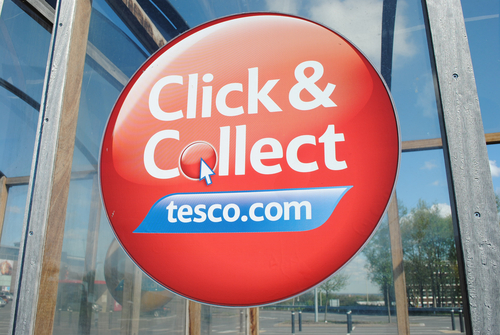The Unexpected Impact of Click and Collect Retail Programs
This is one of our free-to-access content pieces. To gain access to all Ideas for Leaders content please Log In Here or if you are not already a Subscriber then Subscribe Here.

When retailers started offering the ‘buy-online, pickup-in-store’ option, also known as BOPS, the assumption would be that online sales would increase. New research shows, however, that BOPS actually reduces online sales while increasing offline sales — a surprising but positive result.
A website today is indispensable for any retail operation, no matter how small. The Internet is an integral part of the shopping experience.
Not every online retail experience is the same. Grocery stores might offer coupons, office supplies stores might offer coupons and the opportunity to purchase products, and sites such as BarnesandNoble.com are full-service retailers with complete inventory online.
Within the past five years, retailers started offering a new option on their websites: the opportunity to buy the product online and then pick it up in the store. The ‘buy-online, pickup-in-store’ (BOPS) was intended to overcome some of the drawbacks of online purchasing, including shipping costs and the usually long wait for delivery of the product and shipping costs.
Since it eliminated some of the big disadvantages of the online shopping experience, retailers assumed BOPS would increase their online sales. However, when professors Santiago Gallino of Tuck and Antonio Moreno of Kellogg studied a year’s worth of data from a major retail chain (which included stores with and without BOPS), they discovered that BOPS was having a completely unintended effect: online sales in areas where BOPS was available actually decreased, while bricks-and-mortar (B&M) sales in those areas increased. Because the increase in sales in traditional stores was greater than the decrease in online purchasing, BOPS had a positive impact on results…. just not in the way intended.
Some of the increase in B&M sales could be explained through cross-selling: customers bought a product online and then bought other products once they were in the story to pick up the original purchase.
That was only part of the story, however. In the areas where BOPS was available, online purchasers were putting items in their carts but not following through on the purchase. Instead, the research showed, they would buy the product at the local store. This led researchers to identify another customer behaviour, which also comes with an acronym: ‘research online, purchase offline’ or ROPO.
In short, customers were using the BOPS function as a means to research whether the product was available; once reliable availability was determined, the customers purchased the item once they had the opportunity to physically interact with the product (see it, pick it up, try it on, etc.) in the store.
There are a number of important management implications which can be derived from this research:

Ideas for Leaders is a free-to-access site. If you enjoy our content and find it valuable, please consider subscribing to our Developing Leaders Quarterly publication, this presents academic, business and consultant perspectives on leadership issues either as a digital subscription, or better still in a beautifully produced, small volume delivered to your desk four times a year.

For the less than the price of a coffee a week you can read over 650 summaries of research that cost universities over $1 billion to produce.
Use our Ideas to:
Speak to us on how else you can leverage this content to benefit your organization. info@ideasforleaders.com